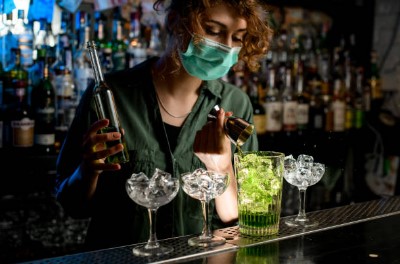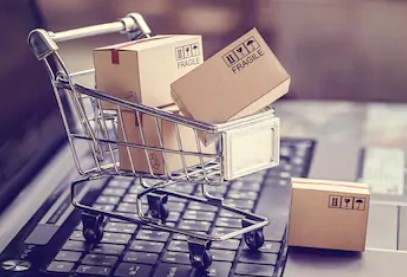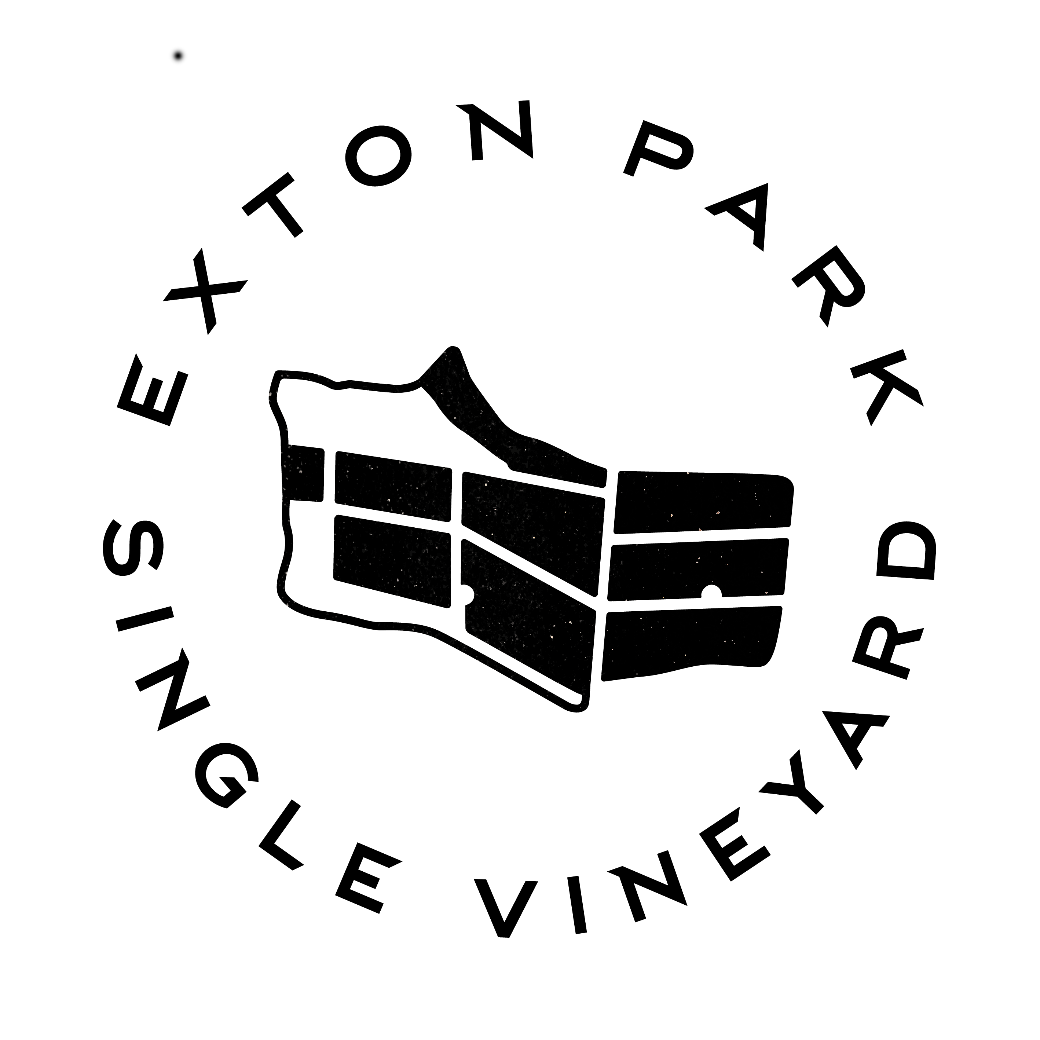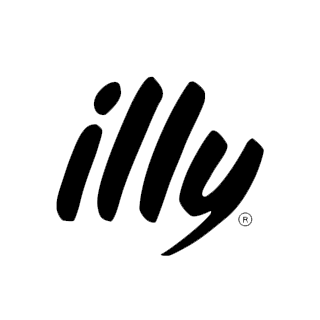Covid-19: How does the Drinks Industry bounce back?

Overview
As all sectors of the drinks industry endeavour to devise and implement strategies to deal with both the initial impact and ongoing ramifications of the COVID pandemic, Cesium Group in partnership with The Drinks Business, convened a Thought Leadership panel of senior figures, to share ideas and experiences.
Titled “Covid-19: How does the Drinks Industry bounce back”, the session, chaired by Cesium CEO Paul Haslam, saw around 20 C-level business leaders and executives representing drinks brand owners, distributors, marketers and retailers, swap insights via video conferencing.
Inevitably, the discussion started with the immediate impact on businesses of the past few months…
As one participant summed up: “No market has been unaffected; everywhere, to some degree or other has been impacted” by the pandemic. That was underscored by some detail from a fellow executive, who said: “We’re in airport retail, as well as import and distribution, and in a little under 90 days, we’ve gone from a growing business to, in some places, zero revenue, and are still forecasting zero revenues.”
Reflecting on changing consumer habits he added, “in a lot of places our off-premise business has boomed but our on-premise business is zero.”
While many businesses in the drinks sector operate globally, the contributor was clear that governments should not be counted for a joined-up approach to aid recovery. “I think one of the biggest challenges that the whole industry faces are the different regulatory approaches to recovery. We’re seeing that even within, for example, individual states in the US as they begin to open up their businesses. The state has one approach, the airport has a second approach and the federal government a third approach.”
Contributors:
○ Adam Keary (UK MD) – Camden Town Brewery; ○ Alexei Rosin (UK MD) – Moët Henessy Europe; ○ Andrew Day (CEO) MMI.LC DUBAI UAE; ○ Charlotte Jefferies (CEO) – 31Dover; ○ Chris Milton (Sales Director) – Thatcher’s Cider Company; ○ Cristian Lopez (Corporate Export Director) – Concha y Toro; ○ Daniel Showering (Qwner) – Brothers Drinks Co; ○ Elizabeth Newman (Category Director – BWS) – Sainsbury’s; ○ Gordon Dron (CEO) – Proximo; ○ Hugh Sturges (MD) – Jeroboams; ○ James Kowszun (COO and Group Finance Director) – Bibendum Wine; ○ James Sutcliffe (Marketing Director) – Monster Energy; ○ Joseph Walsh (Head of Europe) – Distell; ○ Luke Maga, (MD Travel Retail) – Distell International; ○ Neil Jardine (MD) – ILLVA Saronno Holding; ○ Pietro Mattioni (Global Commercial Director) – illy Coffee; ○ Tommy Danvers (Creator) – 808 Whiskey
On-trade

Across most of the world, the impact of lockdown measures implemented to stop the spread of Covid-19 was felt sharply and quickly in the on-trade. Participants discussed their experience of the initial impact of the loss of a key retail channel, as well as their concerns about the longer-term prospects for the on-trade…
In most markets, demand from the on-trade fell to zero or near to it as the lockdown kicked in, meaning suppliers had to urgently revisit forecasts and revise targets, which in some case prompted difficult conversations with shareholder and investors.
Optimism about the health of the on-trade as restrictions lift was also in short supply. As one participant pointed out, “we know that a lot of particularly smaller operators are facing the quarter two rental cliff (due in the UK at the start of July). And so first of all, you’ve got a whole bunch of operators that don’t even know when they have the liquidity to even think about opening.”
Beyond costs such as rent, even those that do reopen are likely to face challenges in terms of cautious consumers and changed behaviour pattern. One atendee pointed out that while “94.9% of the on premise outlets in Italy have reopened, they are generating 53% lower turnover than in a pre-covid scenario”. This creates an additional challenge, with operators are trying to deliver competitive levels of customer service with fewer employees than previously.
He added: “We need to be able to understand what will be the new normal in terms of consumer behavior, and how the on-premise market will look in 6-12 months from now.”
Another participant said conversations with on-trade customers vary from those opening every site from day one, with expectations that a full range of products would be available “through to ‘we might open in August’, or ‘we want to consolidate the range and focus on core brands’.” One participant was blunt: “We’ve got 700 customers in the on trade, and we’ve made massive bad debt provisions. Hopefully they’ll come good, but we probably expect a good portion of those to get bust. It’s just the way it is.”
E-commerce boom

Consumers moving into lockdown were very quick to change their alcohol buying habits, prompting many of the participants to gear up e-commerce operations in response. While this boom in direct-to-consumer sales has been very welcome, it has also prompted challenges for some businesses…
“I guess it’s not a massive surprise online has exploded for us and continues to present a massive opportunity,” summed up one contributor. For that business, the percentage of alcohol included by consumers within their regular online shop has increased from 5% to around 17%.
This shift to online ordering “obviously comes with lots of benefits, but equally lots of challenges“ said another participant. “Online is incredibly expensive to run, and I don’t think anybody would have planned to grow our business fourfold overnight, because it’s definitely difficult to resource and to fund.”
Online sales create and opportunity offer enriched content to consumes browsing webs stores. “The in-store environment can be a bit sterile, whereas obviously online, we can now do high res images, we can do videos, brand stories, and there’s lots of good stuff that I think people previously wouldn’t have invested in before.”
However, another participant expressed a different view on this key point. “There’s a greater need for understanding wines, and online it’s generally not as good as doing that as store-to-store interfaces.”
However, they agreed on the added costs of e-commerce. “We’ve invested in e-commerce because you have to. Personally, I’d rather customers came into the shop, because as we said, it’s more expensive to sell online. Delivery charges are ridiculous (in the UK) and in the wine trade, everybody loses money on delivery pretty much. And so we don’t want to promote it too far.”
Availability presents a particular challenge with wine, said another participant. “Substitutions are notoriously tricky; you could order a Pinot Grigio blush and end up with a white Zinfandel substitute, which for many people is not going to be an ideal end sell.”
One attendee observed: “Interestingly, the place that we’re seeing real premiumisation is online as opposed to in-store. So, places like Amazon and certainly the multiple grocers online is where we’re seeing premium spending and trading up, whether that’s driven by gifts or one-off purchases.”
Another contributor summed up: “Obviously everyone is very aware that e-commerce has been booming over the last three months or so, and there’s lots of opportunity there.
“We’re seeing a lot of premium spirits going through the site, but we’re also seeing consumers who previously purchased once a month now purchasing once a week, and if they were buying two bottles of spirits and a couple of tonics (monthly) and now, they’re now buying a couple of bottles of spirits and eight tonics (weekly).
“I think that’s quite interesting from a new product development standpoint. The e-commerce space is generally seen as a bit of a bottle shop at the moment within the industry. Having loads of products is sometimes quite difficult. so, we’ve stripped it right back to about 500 SKUs and created space around each of the products online.”
Off-trade

For consumers, the shift to spending more time at home has clearly been a boost to the off-trade, not least at the start of lockdown when, for many consumers, alcohol was high on the list of commodities to ‘panic’ buy. At the same time, the measures necessary to make shopping safe have also changed the way consumers approach the off-trade environment…
As one participant explained, “it’s kind of gone a bit back to the old world, when people just shopped once a week and did a ginormous family shop.” An example was cited of a business which has seen the total number of transactions half, but at every transaction customers are spending around 100% more. “That happened broadly overnight, and people are more likely to only go to one retailer as opposed to multiple. People don’t want to queue, and they’ve got a fear of exposure to other people and the virus. Those customers buying into alcohol are spending about 25% more on it.”
One challenge is forecasting the longer term impact of a shift to the off-trade. For one contributor,“in the first part of the lockdown, with people panic buying, the shelves were empty of gin, whiskey and wine. There was quite a lot of champagne knocking around. and champagne and fiscal confidence tend to be inextricably linked. So, champagne had a pretty rough time of it to begin with, but is beginning to return. I think what’s also interesting is that people are coming into the category prepared to buy on full price, as opposed to on promotion.
“With champagne, I think we’re still on a journey to see how the category responds during the course of the crisis. We’ve got a couple of still wines which have done extremely well in the off-premise, and actually made up what they’ve lost in the on-premise.”
Another participant said the shift in demand from kegged beer in the on-trade to canned for the off-trade had bought both opportunities and challenges for a canning facilty. “The question from our perspective is how long is this shift going to continue, because the UK doesn’t have enough capacity to fill that amount of cans
“Some of our clients are saying they expect the shift to continue until the end of this year, because they’re not quite certain about what the size of the on-trade is going to be when it comes back.”
Events

For many drinks brands and suppliers, the summer events and festivals market is an essential part of the sales calendar, making the almost total shutdown of events in summer 2020 a potentially knockout blow…
One participant, who combines a background in the music industry with owning a spirits business, suggested this gave a useful perspective, as “”we have to deal with change all the time. You can have a number one record one week, but where does that take you in weeks two, three, and four for the rest of your life? So, you’re always looking at how to adapt, and that was the big difference I found between working within the drinks industry and the music business.
“From my point of view, I feel we’re quite well prepared for all these eventualities. And what we’ve been doing is a lot of working with the online community, we’ve been talking with a bunch of different people with a view to partnering up with them and doing online festivals.”
He suggested that the way people consume music will shift away change from the live festival experience, and that drinking patterns, often integral to the music experience, will have to change with it.
Another attendee cited a brand highly engaged with the live music and festival circuit, which “ had to pivot quite quickly, and in big companies turning quickly isn’t always an easy thing to do. But once the lockdown happened, we were in a position to evaluate all of our event or festival partners across EMEA.
“We’re very lucky in that we’ve got a lot of great creative partners in the event space from a promoter’s perspective. Instead of taking investment out of partnerships with certain promoters, we’ve kept that money in the partnership and worked with them on developing digital event activations, so that they’re able to continue to keep their business moving.”
One example of this is a competition which provided the ingredients and kit to set up a home festival bar including menus, cocktail making kits and ice makers, as well as alcohol and mixers. This was delivered using the Twitch streaming platform, “and we’re going to be using it as a great way to sample as well. Exit sampling at festivals is a huge piece of what we do. We’re looking at digital ways to be able to run competitions to give out supply of stock, and connect in that way.”
Technology

The way that video conferencing apps, notably Zoom, have become ubiquitous during lockdown demonstrates that the ways in which consumers use technology is just as likely to jump forward as it is to evolve. Participants discussed the ways in which the pandemic has created then need for new ways to communicate both within the trade, and with consumers…
One participant made the point that in many territories, the on-trade is a fragmented and complex route to market for a brand, with the lines between brand owner, wholesaler and operator often blurred.
“We are using digital to create a closer connection. With consumers we’re working on loyalty programs, and we are developing a lot of assets that we are giving free to our on-trade customers to enable them to engage our consumers, who are actually also their customers.
“An app will enable on-premise outlets to get in touch with us and reorder product, promo activities, digital assets, and training. They can have it through the iPad, to the computer, and to the phone. We don’t need a salesman to visit, a B2B portal will serve our on-premise customers and through a chat box, customers will be able to interact with us in real time, without the need for the rep to visit.”
Another participant said that in their business, 60% of online shops are now completed using an app, while in the physical stores, use of handheld scanners has gone up to 70% from 32%. “and we’ve seen that once people use it twice, they never go back to the normal checkout process.”
However there is also a challenge, in that both online app, and in-store scan shops, create fewer opportunities to promote new products.
Global Travel Retail

The global travel retail market, long an engine of sales for the drink sector, juddered to a halt as measure to control the Covid-19 pandemic took hold. The discussion included both the impact on GTR, and way businesses were trying to mitigate it…
As contributor summed up, in 2019 travel retail duty free was worth just under $70 billion, with an estimated growth by 2023 to achieve more than $125bn. The current picture, said a drinks industry CEO, is that GTR “has been reporting zero in most territories for the last couple of months, basically all across the world, and that that has a big impact on premium businesses, because GTR is a really important channel for selling premium value products.”
Among the strategies implemented to counter this have been virtual samplings of super-premium products with VIP customers over Zoom, and online auctions giving customer the chance to bid for limited edition products.
In the mainstream, though, the challenge will be to convince the authorities that the GTR market needs to be supported, as well as bringing back the consumers who are concerned about the health implications of travel.
While many regulators are concerned about the impact of congestion caused by airport retail outlets, “when you actually look at the model, and when we’ve actually gone and explained it to them, by opening up the stores, you’re actually allowing customers and passengers to naturally flow through other areas of the terminal, rather than having everyone going through like cattle gates. So, it is important that when the airports are opening to actually start opening up these stores.”
Another participant suggested the pause is an opportunity to rethink some aspects pf GTR, which is a very conventional retail model in many ways. “One aspect of retail is fulfillment, and the other is experience and upsell.” In a market where most operators focus on competing just on price, “global travel retail, is, I think, ripe for disruption.”
Human Resources

Across all industry sectors, pandemic has impacted on traditional working patterns, from the shift to home working from the office, to furloughed staff and, inevitably, redundancies. The ways in which businesses can keep employees engaged and effectively utilised prompted an interesting debate…
One contributor said that in his business, the view from the top has been to “leave this pandemic with the same people as we came into it. If we have the right people in place, we’ll need them there at the end of this process when we come out the other side, because that will give us the greatest capability to bounce back.”
Another said there have been opportunities to rethink traditional corporate team structures. For example, Amazon had become a very important sales channel during the lockdown, so “we evolved our teams to be more agile. We now have a small working party, someone from commercial, someone from marketing, someone in customer service and someone in supply chain. I’d use that as an example of probably the most effective internal collaborative approach for any customer that we’ve had.”
One attendee believes it is important to realise that “there are some quite hard miles to walk” before businesses can celebrate coming through the downturn. “We’ve tried very hard to keep the workers and the non-workers together mentally over the last few months. We can’t just wait and hope it fixes, we’re going to have to put strategies in place, when they all find themselves actually working again over the next few days, weeks and months, to make sure that they do bind together again as a team.”
Core Range vs Innovation

Conventional wisdom says that consumers buy conservatively in a time of crisis. Innovation, however, is the life blood of the drinks sector, meaning that the lockdown also created new opportunities…
One of the most significant trends of the lockdown, seen in most markets globally according to one participant, is in home cocktails. “We make a non-alcoholic mixer for margaritas, and we’ve seen an extraordinary explosion this year of that product both in markets where it had preexisted, and in markets where it barely existed before. People are experimenting with different drink styles while they’re at home.” .
Another opportunity is to engage younger consumers, said one contributor. “I wholeheartedly believe that strong brands will get stronger. That gives you permission to innovate, to bring new consumers in.
“We probably all sit within the sweet spot of consumers in a 45 plus, wealthy, drinking demographic. We will have to think of the future and how we bring youth into our brands, into our categories, either through the on trade, whatever that looks like, or the off trade.”
Another attendee added: “We’ve taken the view that innovation is going to be absolutely critical coming out the other side of this crisis,” as both consumers and operators seek points of difference when they shop, and drink.
However, one participant sounded a note of caution. “Innovation has to be true innovation and not duplication, because we’ve got plenty of that. Rationalisation is a key part of our strategy, and the reason we’re rationalising is to free up space to do more innovative and exciting things.”
The Future

While there was inevitably caution about the short term, with discounting to drive trade and a fall in the number of on-trade outlets likely scenarios, there was also optimism…
As one attendee said: “What we’ve learned during the last weeks and months, is if you’ve got good relationships, and you’re actually working in partnership with your customer and suppliers, you’re in a much better position than if you’re not talking to each other or don’t engage. I think what I’d like to see coming out of this is that there is more of a relationship all the way through the supply chain.”
Another contributor summed up: “I think we’ve got to learn to be massively more flexible, and much more creative in whichever channel we’re operating, particularly on-trade, which is going to see massive changes and massive challenges over the next six months to a year.”
About Cesium Group
Cesium Group is a boutique headhunting and HR consultancy working across the beers, wines, and spirits categories, both globally, and in the UK. We take the best elements of process and structure from the big international search firms and HR consultancies but redefine them in a more agile, authentic, and immersive way. The result? Better than best practice that positively impacts the bottom line of our clients.





















